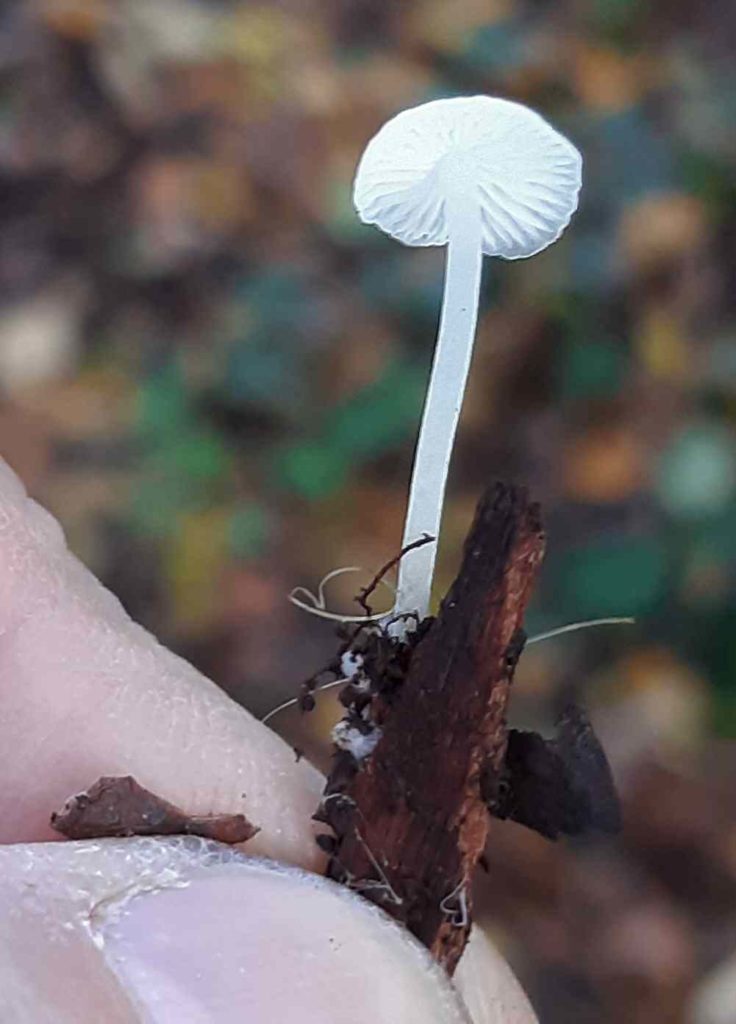
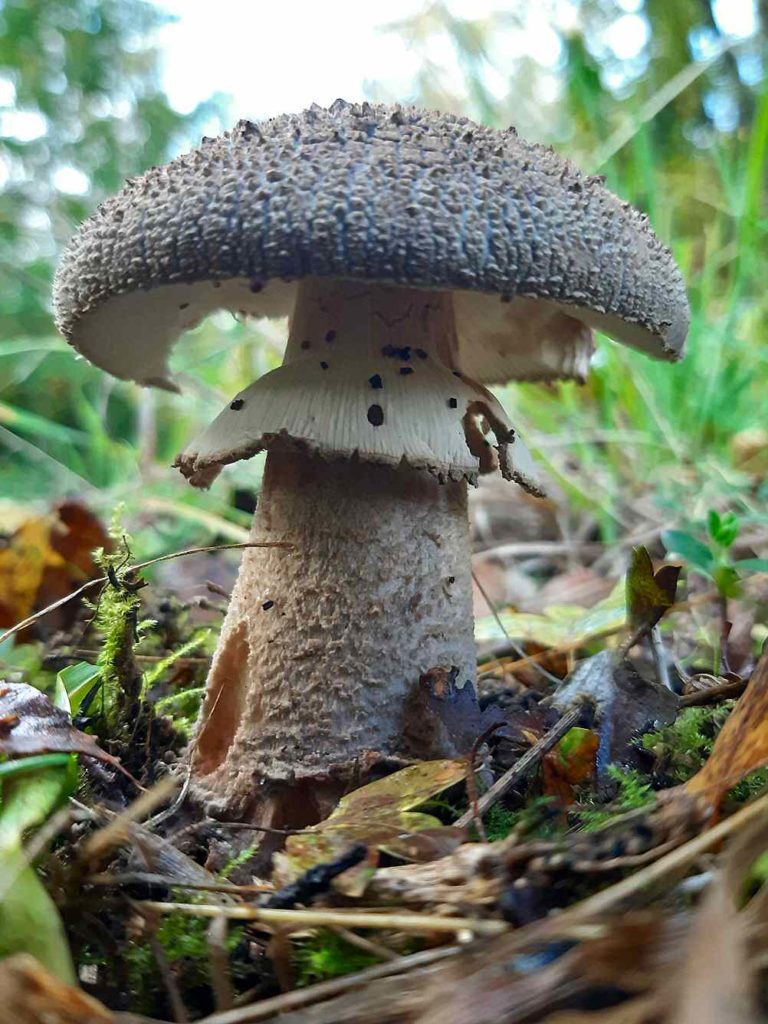


Well, despite the extraordinary warmth of both September and October – I was still working in a T-shirt down at the Gunnersbury Triangle nature reserve today, anything more being too hot – the fungi have finally come out in earnest. This small speckly Dapperling seems to be Lepiota hystrix, a rare species.
Several fungi were on show on a pile of birch logs, including a large Birch Polypore and some elegant smaller Turkeytail brackets as well as Orange Curtain Crust.
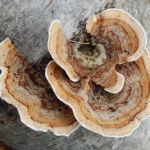
These handsome Common Cavaliers were growing beside the path.
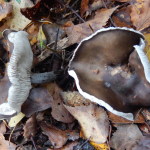
Many damp rotting sticks and stumps had Stagshorn or Candlesnuff fungus growing out of them, Xylaria hypoxylon. These were thin and stick-like early in November, well-developed by 20 November.
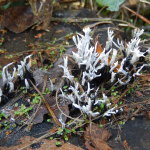
In the anthill meadow were plenty of puffballs, Lycoperdon perlatum. They certainly looked pearly, as their specific name suggests.
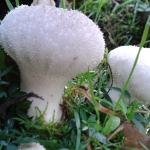
In the picnic meadow was a tall slender yellow Inkcap, Coprinus auricomus.
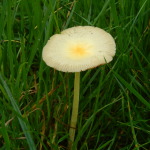
A long-bodied wasp, surely a queen, was trapped in the surface film of the pond by the parish boundary stones. We rescued her with a stick to get a closer look.
Two days later: the weather has turned more autumnal and showery. More fungi have popped up, including quite a few Clouded Funnels, Clitocybe nebularis, behind the anthill meadow. The display of Puffballs is fine, the large clean specimens having an obviously grainy, almost pearly surface.
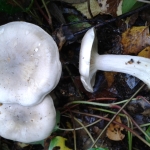
Some Sulphur Knights, Tricholoma sulphureum, have grown up behind the loggery at the base of the mound by the pond. They are deep orange-yellow, quite thick-stemmed, with an flattened or dished cap and widely-spaced gills that barely touch the stem.
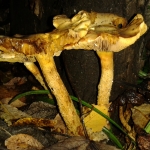
I found a broken Blusher mushroom, Amanita rubescens, in the anthill meadow. In this family of poisonous fungi, some deadly, it is edible when properly cooked, though the water it is cooked in must be thrown away.
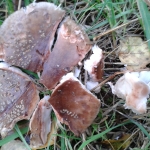
And a single small Slippery Jack, a suitably slimy bolete. It was yellower than the photograph shows, the cap appearing a shining light brown, the pore surface underneath rather yellow.
By the 6th of November it was far colder, and there were fewer species on show, with Fly Agaric, Clouded Funnel, quite a few Butter Caps, and this small gelatinous fungus on dead willow, Tremella mesenterica. I also found a small fragment of an brown Amanita with a white stem, probably A. pantherina, the poisonous Panther Cap.
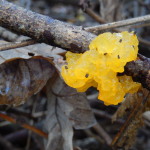

There were several Pale Brittlestem at the edge of the Anthill meadow under Birches, bordering the strip of acid grassland where the railway used to be.
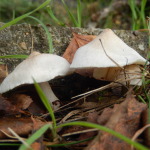
By the 9th of November, things were visibly more autumnal; the Clouded Funnels were still about, now large and more clearly funnel-shaped; a few Butter Caps persisted, along with the Puffballs. The small fungus Phoma hedericola (‘hedera’=Ivy)was by now making large obvious spots on ivy leaves.
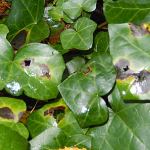
These little toadstools with a cream-coloured, slimy cap and whitish fleecy stems were growing out of a loggery, the dead wood half-buried in the soil. They may be the Sticky Scalycap, Pholiota gummosa.
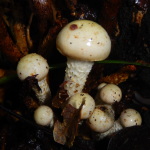
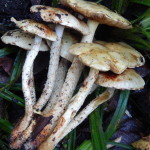
Finally, no collection of fungi is complete without The Deceiver, Laccaria laccata, which comes in a variety of sizes, shapes and colours. It’s typically rather russet-brownish and the stem is quite thin, often a bit flattened and twisted. The cap can be round or wrinkled; it begins rather globular and flattens out. It’s rather well-named. Mind you there are several similar species: this could easily be L. fraterna, given its smooth brown stalk and rather rufous cap.
Fungi are continuing to appear as late as the 11th of November. The magnificent Collared Earthstar, Geastrum triplex, was growing under birches, willows and oaks behind the anthill meadow.
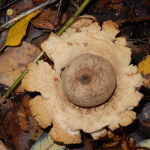
On the 12th of November:
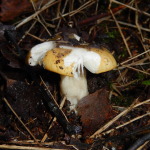
On 18th November, a troop of smallish, tall, pale Coprinus that don’t really turn to the usual black ink, growing on woodchip beside the path. Seems close to Coprinus impatiens.
After all the rainy weather (I even found a large toadstool – in June: The Blusher, Amanita rubescens), today was suddenly hot, at least it seemed so while digging brambles out of the ramp meadow, raking up the scythed Cow Parsley in the full sun, pitchforking it into a barrow and carting it off to a deadhedge. It was a satisfying conservation job, one of those where you can see what you have done, and it looks a lot better after than before. The area is supposed to be a meadow; we successfully suppressed the overgrowth of brambles two years ago, leading to a burst of rather nice Garlic Mustard and its attendant Orange Tip butterflies last year: and a second wave of Cow Parsley that must have seeded itself really well, because it suddenly covered the area this year. Now that it’s all cut, we may hope that grasses and smaller herbs may get going: some Ground Elder at least has begun the process.
In the pond and on the vegetation for a way around it, including atop the hump, Large Red Damselflies are soaking up the sunshine, and flying in cop, egglaying – the females dip the rear half of their very long abdomens in the water to reach an aquatic plant such as Myriophyllum on which they place the eggs.
The butterfly transect was again quiet, but graced by the first Cinnabar Moth of the year: there is a fair bit of Ragwort coming up, and this adult must be newly hatched out of a pupa, presumably at ground level or below as the plants are annual.
Sure enough, after I had finished the transect, the first Holly Blue butterfly of the year, beautifully fresh and new, skipped its bright quick flight just in front of the hut.